With warmer weather days upon us and the great outdoors calling, it’s time to get out and go for a hike. But what should you wear when the temperature is around 70 degrees? Our Guide has all your questions answered, giving you the confidence to explore nature with the perfect hiking outfit that will keep you comfortable all day long.
What to Wear Hiking in 70-Degree Weather?
On days when the temperature is around 70 degrees, there are certain pieces of clothing that can help keep you comfortable during your hike.
Start with a lightweight base layer such as a tank top or t-shirt made from moisture-wicking material to keep sweat away from your skin. This will help prevent chafing and increase comfort levels on the trail. Next, add a long sleeve light thermal shirt in case of cooler temperatures or even strong winds. These shirts come in various thicknesses so you can choose one based on the forecasted weather conditions.
Finally, it’s important to choose the right shoes for your hike. Wear a pair of lightweight hiking boots with good grip and support on rugged terrain or opt for trail running shoes if it’s going to be an easy walk. Whichever option you go with ensure that they are well-fitted and comfortable enough to walk in all day long without any difficulties!
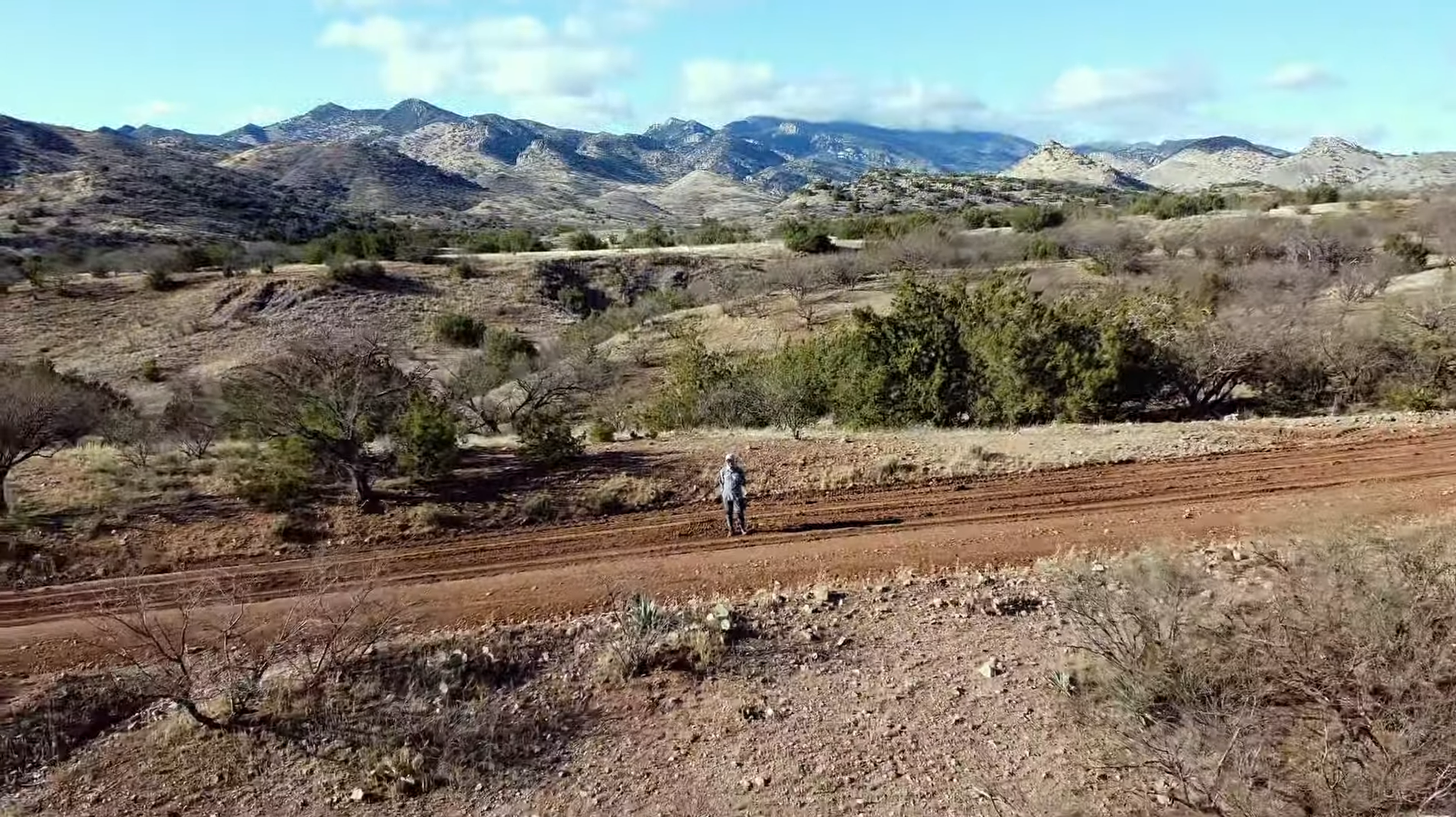
Choose the Right Fabric
When you’re considering what to wear while hiking in 70-degree weather, one key factor is the fabric of your garments. You want clothing that breathes and is lightweight, but also provides enough coverage so that you don’t overheat or get sunburned. A good rule of thumb for fabrics when it comes to outdoor activities like hiking is to opt for natural fibers whenever possible. Linen, cotton, and wool are good choices since they’re lightweight yet breathable and provide better protection than synthetic materials like nylon and polyester.
Finally, choose garments with sun protection built in. Sun-protective clothing typically has a UPF (Ultraviolet Protection Factor) of 30 or more — this means it blocks at least 97.5% of UV rays. This is especially important on sunny days! Look for shirts and pants with UPF ratings of 50 or higher if you’re going to be out on the trail all day.
Fabric for Dry Heat
When it comes to summer hiking, you have to be mindful of the fabrics you choose. For 70-degree weather, it’s essential to opt for light and breathable materials that can wick away sweat and keep you from getting too hot. Great fabric options include nylon, polyester, lycra, or a combination of these fabrics. Cotton is not recommended because it absorbs sweat and takes longer to dry.
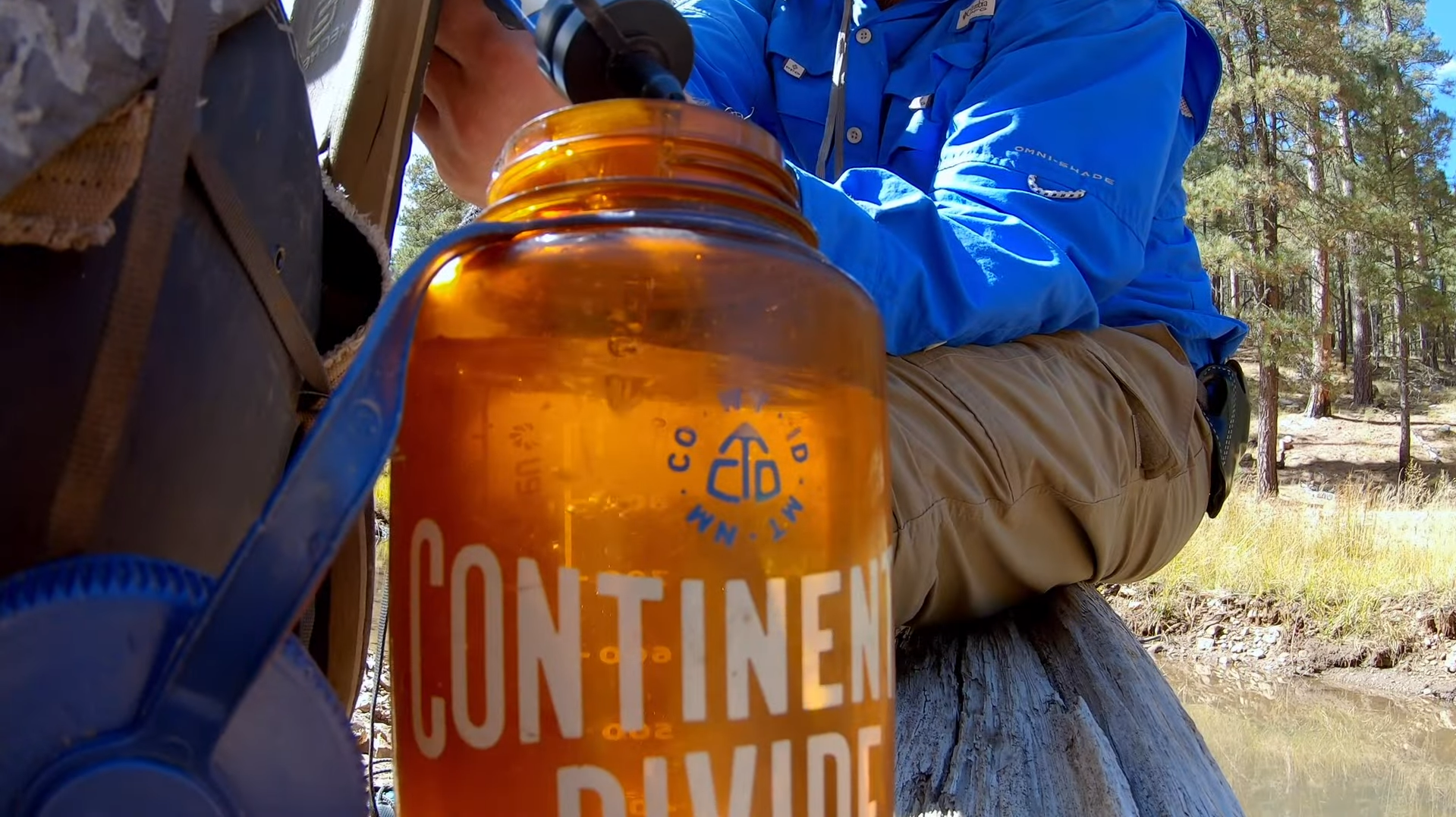
Fabric for the Humid Heat
When hiking in warmer and more humid temperatures, it’s important to choose a fabric that will keep you cool. Look for lightweight materials such as cotton, linen or polyester blends. Avoid wearing anything too heavy because it won’t let your body breathe properly and you’ll end up feeling hotter than the temperature really is.
What Type of Clothes?
First off, you want your clothing to be lightweight and breathable. Light colors are often recommended as they won’t absorb heat from the sun like darker colored fabrics will. Secondly, think about layers – you don’t want to be too hot but you also don’t want to be cold if the temperature drops or wind picks up.
The type of tops that work well for this kind of weather include short-sleeve shirts, tank tops, and t-shirts made out of moisture-wicking fabric such as polyester or spandex. These materials help pull sweat away from your skin and keep you feeling cooler. A lightweight long-sleeve shirt or lightweight sweater can also be a good idea, especially if the weather is slightly cooler than expected.
Lastly, when it comes to footwear, make sure to stick with light colors as they will keep your feet cool in warmer climates – plus, dark colors can heat up quickly in the sun. Look for a pair of well-ventilated shoes, sandals, or even water shoes if you plan to be near any creeks or streams.
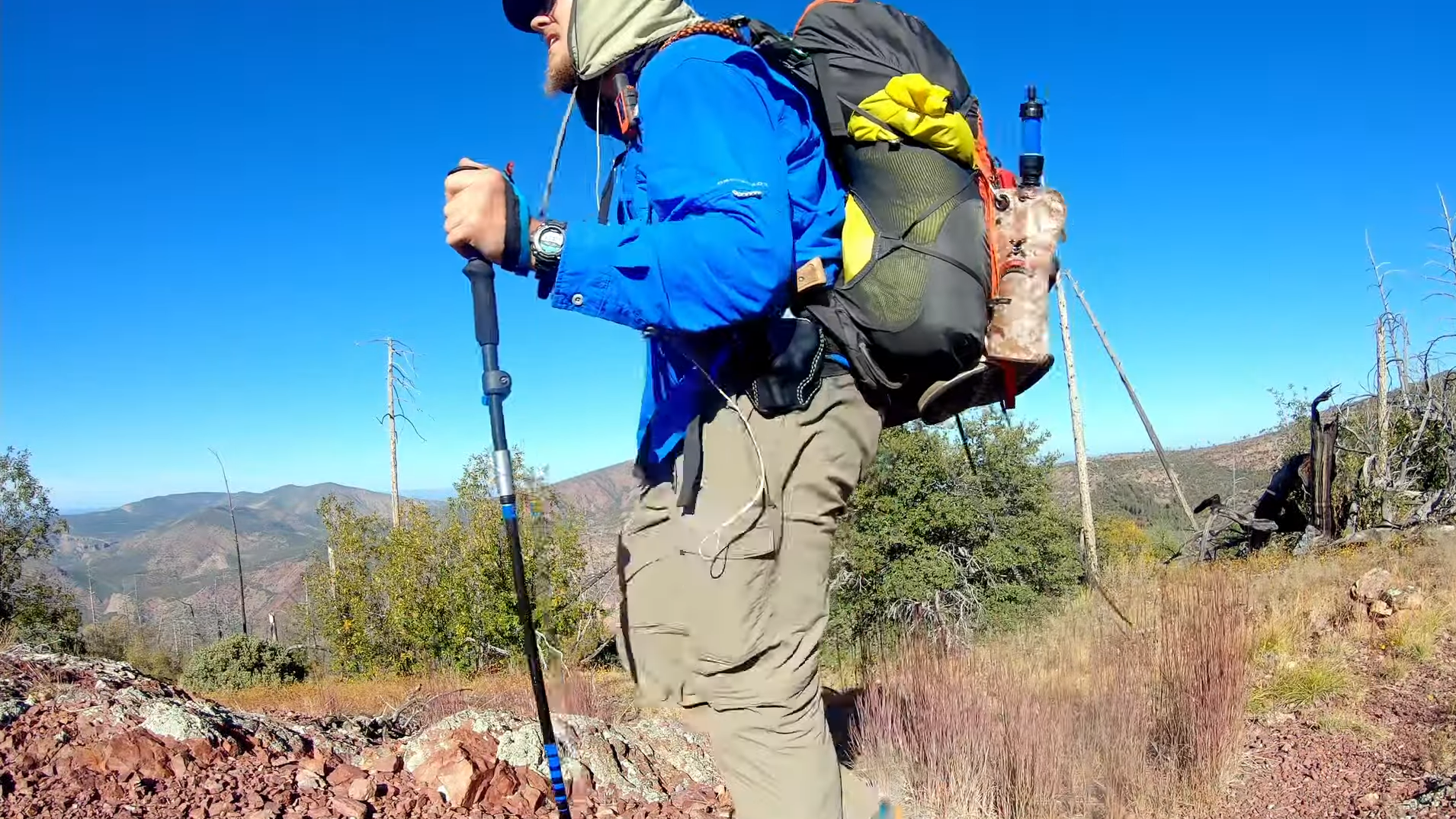
Light Colors
For the warmer days, you should opt for light colors. This will help to reflect the sun’s rays and keep your body temperature under control. Opt for white, bright yellow or beige pants/shorts, and light-colored shirts such as baby blue or grey. Keep in mind that while dark colors absorb heat, lighter shades can help to keep you cool by reflecting it away from your body. You also might want to try lightweight fabrics like linen or cotton which can help your skin breathe better in hot weather.
Breathable Clothing
When it comes to hiking in warm weather, breathability is key. Look for lightweight fabrics that are designed to draw moisture away from the skin like nylon or polyester and avoid heavy materials such as denim or wool. Cotton is not a great option either, as it tends to stay wet and can cause chafing. Stick with airy tops like sleeveless shirts, tank tops, or short-sleeved T-shirts made of technical fabric and shorts/skirts made of quick-drying material.
UPF-Rated Clothes
When it comes to staying protected from the sun, your first line of defense is wearing clothes that are designed for outdoor activities. Look for clothing made with UPF-rated fabrics to minimize your exposure to UV rays. Lightweight materials such as nylon and polyester provide excellent protection from the sun while still allowing air to move freely throughout the fabric, keeping you cool. Long sleeve shirts and pants are ideal choices since they keep more skin covered but look out for “breathable” or “ventilated” styles if you want extra ventilation. Additionally, when searching for a hat, try to find one with a wide brim all the way around — this will help protect your face, ears and neck while preventing sweat from dripping down into your eyes.
Put on a Hat
When the sun is beating down, a hat can help protect your head and face from the heat. Look for lightweight hats that have ventilation and sun protection to keep you cool. A wide-brimmed hat would be best as it will provide more coverage than a baseball cap. Also, make sure to choose breathable materials like cotton or linen so your head won’t overheat.
Wear Shorts
For 70-degree weather, shorts and T-shirts are the perfect go-tos. Shorts should be lightweight and breathable so your legs don’t get too hot when hiking. Look for materials like nylon or polyester that will wick away moisture, keep you cool, and make it easier to move around in. As for your T-shirt, opt for a lightweight cotton blend that provides optimal breathability.
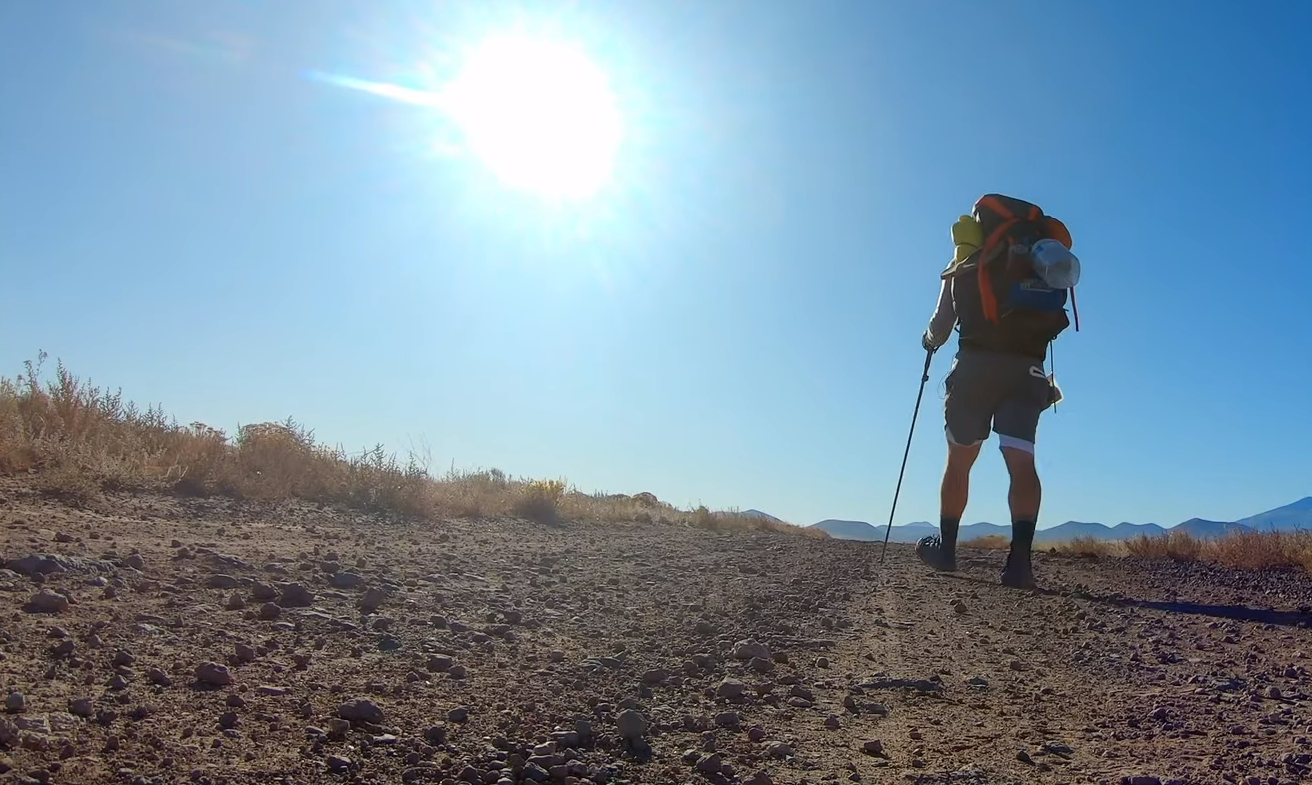
Wear the Right Socks
When you’re heading out on a hike, the right socks are essential. It’s important to choose the ones that can keep your feet dry and comfortable during the entire hike. For 70-degree weather, opt for lightweight hiking socks made from synthetic materials or wool. These types of socks help wick away moisture and keep your feet cool during the hotter hikes. Make sure to also invest in a pair of good quality waterproof boots that provide ample support for your feet while walking long distances. By wearing the right type of socks and footwear, you’ll be able to enjoy your hike with less discomfort and aches when you get back home!
What to Wear for Top Layers
When it comes to hiking in 70-degree weather, one of the most important things you should consider is what to wear for your top layer. This layer should be lightweight but still provide protection from the sun. A light, breathable shirt, such as a tank top for women or a short sleeved technical shirt for men, is ideal. If you’re looking for something that will keep you cooler in the heat, try a moisture wicking fabric like polyester or rayon. Pair this with a quick-drying long sleeve shirt if you want additional coverage and protection from UV rays. You can also opt for an ultralight jacket or windbreaker when temperatures start to dip at night. For extra warmth and insulation, add on a lightweight fleece or down vest.
Base Layer
A base layer is an important part of your hiking outfit no matter the weather. When it’s 70 degrees outside, you’ll want a lightweight fabric that wicks away sweat and keeps you cool. Look for tops and bottoms made with moisture-wicking materials like polyester or merino wool. Avoid anything cotton, as it absorbs moisture and can leave you feeling wet and uncomfortable. Also think about sleeve length; if you’re going to be out in direct sunlight, opt for short sleeves or tank tops to stay cool.
Mid Layer
The mid layer of your wardrobe is probably the most important, as this will provide insulation and help to keep you warm even when you’re not in motion. Look for lightweight items made from synthetic materials such as fleece or polyester, which can easily be packed away when needed. A long-sleeved t-shirt or zip-up fleece are good options for a mid layer; just be sure to avoid anything too bulky that could make you feel uncomfortable while working up a sweat on the trail. You may also want to bring along a thin waterproof jacket if there’s rain in the forecast – although most people find they don’t need it in 70-degree weather.
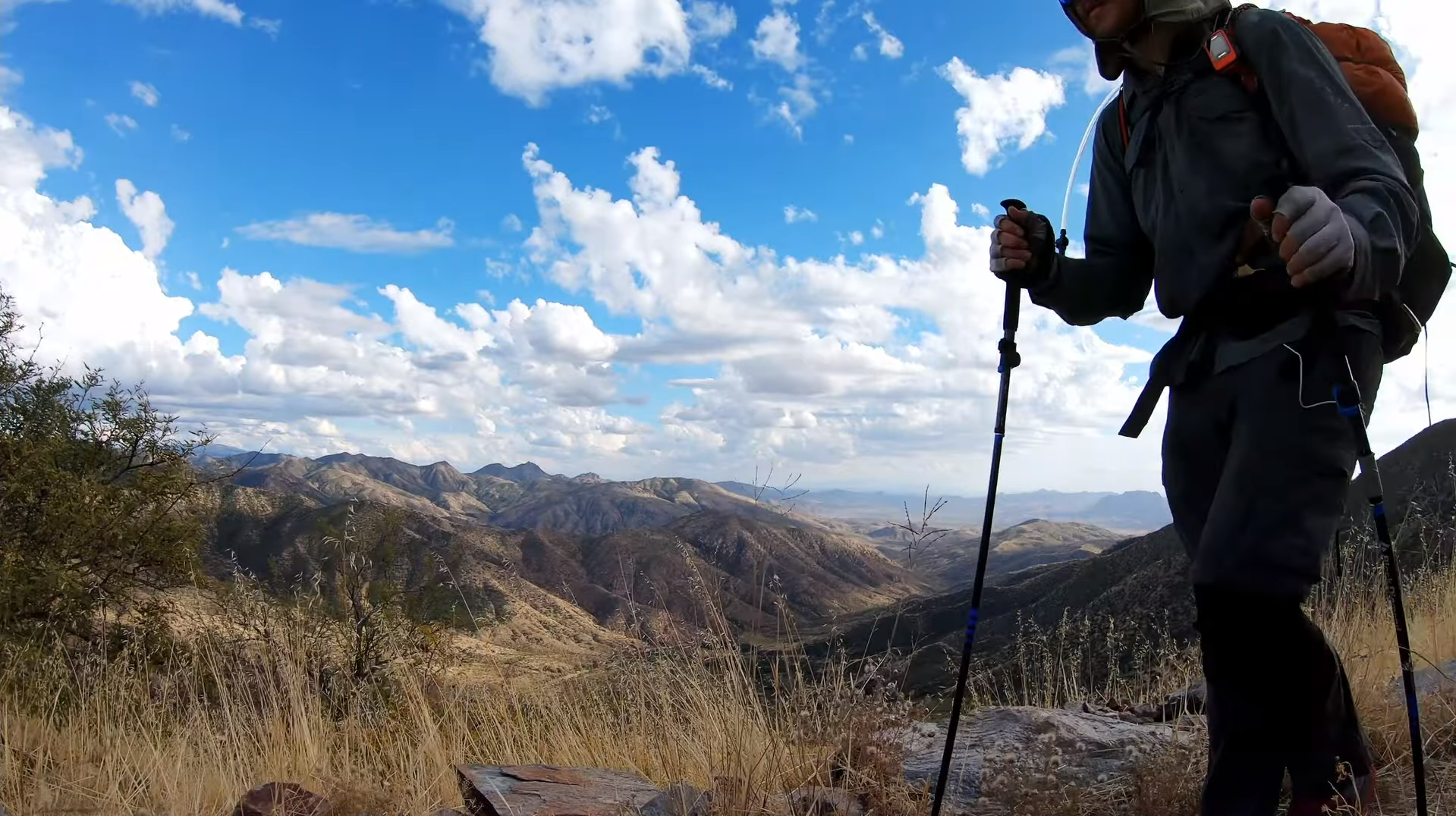
Outer Layer
Depending on the climate and terrain you’re hiking in, you may need to wear a jacket. However, for temperatures in the 70s (°F), a lightweight windbreaker or rain shell should be enough. The most important thing is that your outer layer keeps you protected from unpredictable weather while still allowing ample breathability. Make sure to choose materials that are waterproof and highly breathable like nylon, polyester, and spandex blends.
What to Wear Bottom Layers
When hiking in 70-degree weather, it is important to dress in layers. The main goal is to stay cool and dry. Start with a lightweight, quick-drying base layer such as a tank top or shorts made from synthetic fibers like polyester. This will wick away sweat from your skin so you won’t overheat while on your hike. You can also opt for a thin long sleeve shirt if the sun is strong or there is a light breeze.
Next, add some mid-layer insulation such as leggings or capris made from wool or synthetic fabrics like fleece. These will provide an additional barrier of warmth between you and the elements while still allowing for breathability. Finish off with a waterproof or windproof shell designed for outdoor activities. This will protect you from the elements and keep you dry if it starts to rain or gets windy.
Pants
When deciding between pants and shorts, consider the terrain on your hike. If you’ll be walking through a lot of brush or trails with tall grass, choose pants for better protection. For dryer trails or those that don’t have any overgrowth, opt for lightweight hiking shorts that will keep you cool but also provide some coverage from potential scratches or bug bites.
Underwear
Make sure you choose the right underwear for your hike. Opt for lightweight, synthetic fabrics like polyester that will keep sweat away from your skin and help regulate temperature. If you’ll be wearing pants or shorts, find underwear with a longer inseam that won’t bunch up under your outerwear. Also look for breathable options with flat seams to avoid any irritation while walking or running on trails.
Socks
Your feet are going to be doing a lot of work, so make sure you choose the right socks. Look for wool or synthetic options that will keep your feet comfortable and dry throughout the day. It’s also important to pick socks with arch support for extra cushioning and sweat-wicking materials to keep you from getting too hot and sweaty. Lastly, opt for high-quality, no-show socks that won’t show through your shoes or hiking boots.

What Should You Not Wear While Hiking?
It’s important to bear in mind that when it comes to clothing for hiking, the less restrictive and more breathable your garments are, the better! This means that tight-fitting jeans, synthetic fabrics, or heavy jackets should be avoided. All of these materials can trap heat and moisture which will make you feel very uncomfortable while hiking in mild weather. You’ll also want to avoid wearing too many layers as this can become cumbersome and may even cause overheating. Lastly, sandals and flip-flops should be avoided as these won’t provide enough support for your feet during a long hike.
The Material to Avoid When Hiking
When hiking in the warmer months, you should avoid wearing tight-fitting and heavy materials. Materials such as wool, corduroy, velvet, and denim will trap heat and make it difficult for your body to cool itself down when exposed to the sun. Wearing these fabrics during activity can create an uncomfortable feeling of perspiration and overheating while outdoors.
In addition to avoiding heavy or thick materials, it’s important not to wear clothing made from synthetic materials like nylon or polyester. These fabrics are not breathable and won’t allow air circulation which is necessary for cooling the skin during exercise. Furthermore, synthetic materials lack the ability to absorb moisture which can become extremely uncomfortable when hiking.
Types of Pants to Avoid When Hiking
When it comes to pants, you should avoid wearing jeans or heavy material in 70-degree weather. These materials will cause your body to sweat more and make you feel hotter than necessary while hiking. Instead, opt for lightweight, breathable fabrics that will keep you cool and allow air to circulate around your body. Shorts are usually the best choice when temperatures are high, as they provide additional ventilation and help regulate your core temperature better than long pants do. If you don’t want to wear shorts, try out some cargo pants or yoga pants with mesh lining for extra breathability and comfort. Whichever style of pant you choose, always look for something lightweight and well-ventilated so that you stay comfortable while on the trail.

Types of Shoes and Socks to Avoid When Hiking
When hiking in 70-degree weather, it’s important to be mindful of what to wear on your feet. Wearing the wrong type of shoes or socks can cause blisters and make your hike uncomfortable.
Instead, opt for lightweight athletic shoes such as running or cross trainers that allow air to circulate around your feet and provide enough cushioning for comfort. Comfortable, lightweight wool socks are a good choice and can be found in a variety of sizes and colors to match your ensemble. Keep in mind that cotton is not recommended due to its poor wicking ability – it will absorb sweat which could lead to blisters or discomfort.
Other Ways to Stay Cool
Besides the clothes you wear, there are some extra tips and tricks to keep you cool and comfortable while hiking in 70-degree weather.
- Protect yourself from the sun: Wear a lightweight hat with a wide brim, sunglasses, and sunscreen for protection from UV rays. You can also opt for clothing that is labeled as “sun protection” or “UPF” which is UPF rated fabric that blocks out UVA/UVB rays.
- Bring lots of water: Staying hydrated is key when it comes to being active outdoors in hot weather! Make sure to bring plenty of water with you on your hike so you don’t get dehydrated.
- Schedule your hike for the early morning/late evening: Temperature wise, these are usually the coolest parts of the day. Plan to start and finish your hike during these times if possible!
- Take plenty of rest: Take breaks often in a shady spot to help keep your body cool and relaxed while you’re hiking in 70-degree weather.
- Wear sweat-wicking clothing: Make sure your clothes wick away moisture from sweat so that you don’t become too hot or uncomfortable while out on the trails.
- Carry a cooling neck wrap: This is an easy way to quickly reduce your body temperature when needed, simply wet it down with cold water before you head out and it will stay cool for hours. [1]
Avoid the Hottest Time of the Day
If you plan on hiking when the temperature is 70 degrees or higher, it’s best to avoid the hottest part of the day. Aim for a start time of either before sunrise or in the late afternoon after 4 pm. That way, you’ll be able to enjoy your hike without being uncomfortably hot and sweaty.
Stay in the Shade
If you’re going to be out on the trail for a while, it’s important to stay in the shade as much as possible. Sunscreen is great but having some extra protection from direct sunlight can help keep your skin from burning and potentially developing heat-related illnesses. Wear a wide-brimmed hat or sunglasses and take frequent breaks in shaded spots during your hike. You might even want to bring along an umbrella! Remember, staying cool is just as important as dressing right for hot weather hikes.
Use the Vents
When hiking in 70-degree weather, it’s important to wear clothing that is comfortable and can keep you cool. Look for items with ventilation built-in, like mesh underarm vents on shirts or shorts with side slits. These vents will let the air circulation keep your body temperature regulated while hiking through varied climates. Additionally, fabrics with wicking properties help pull sweat away from the skin and evaporate quickly. This keeps you feeling dry and comfortable even during strenuous activities.
Stay Hydrated
Hiking in hot weather can make you sweat more and increase your risk of dehydration. Bring a reusable water bottle with you, and if it’s going to be an especially long hike or hot day, consider bringing a hydration pack or backpack with a built-in bladder. It’s important to stay hydrated during any type of physical activity, so plan ahead and don’t forget your water bottle!
FAQ
What should I wear in 70 degree weather?
When hiking in 70-degree weather, you’ll want to make sure you’re wearing the right clothing. To start, choose lightweight fabrics like cotton and linen that will keep you cool while still providing some protection from the elements.
For bottoms, choose shorts or capri pants for maximum ventilation and comfort. If there is any chance of rain or if it gets chilly at night, opt for a pair of lightweight water resistant pants that won’t weigh you down when wet.
On top, go with a light t-shirt or tank top paired with a long-sleeved shirt to protect against sunburn. However, make sure your shirt has vents in the back or sides so that air can flow through and keep you cool. A lightweight jacket or hoodie is also a good option for cooler evenings.
Don’t forget to wear sun protection like sunglasses, a wide-brimmed hat, and sunscreen with an SPF of at least 30. Consider bringing along gloves and a neck gaiter if you need extra warmth during your hike.
Finally, don’t forget comfortable, well-supporting hiking boots that will keep you safe on the trails! If there are any water crossings, bring along waterproof shoes or sandals so you can stay dry. [2]
By following these tips, you can be sure that you’ll have everything you need to enjoy your hike in 70-degree weather!
What is the best outfit to wear when hiking?
When hiking in mild weather with temperatures around 70 degrees, it’s important to dress comfortably. The key is layers! Choose lightweight, breathable pieces that can be easily layered or removed as the temperature changes throughout your hike.
Start with a base layer such as a synthetic T-shirt or tank top. This will wick away moisture from your body and help you stay cool. On top of this, add an insulated long-sleeve shirt for extra warmth if needed.
For bottoms, opt for quick-drying shorts or pants that are made of lightweight materials like nylon and polyester. You want something that won’t weigh you down but still provides coverage and protection from the elements. [3]
What should I wear in 75 degree weather?
If you’re planning on going hiking in 75 degree weather, you’ll need to make sure you wear the right clothes. Here are some tips for staying comfortable and safe:
- First and foremost, always wear a good pair of hiking shoes with plenty of grip. This will help provide stability on any terrain and also protect your feet from blisters and injuries.
- Also remember to dress in layers. A lightweight base layer and a light jacket should be enough to keep you warm when the temperature drops at night. If it’s raining or windy, bring along a waterproof/windproof jacket as well.
- Avoid wearing cotton clothing – especially when it comes to shirts and pants – as this fabric can take a long time to dry and will cause you to be cold. Opt for synthetic fabrics like polyester, spandex, or nylon instead.
- In addition, wear hats and sunglasses to protect your head and eyes from the sun’s rays. A wide-brimmed hat is ideal if you don’t want your neck to get sunburned.
Following these tips should help you stay safe and comfortable when hiking in 75 degree weather! Just make sure to bring plenty of water too so that you can stay hydrated!
Is it OK to hike in jeans?
No, jeans are not recommended when hiking in 70-degree weather. Jeans can be too heavy and uncomfortable at this temperature. Instead, choose lightweight and breathable fabrics like cotton or nylon for your base layer and outerwear. These will help you stay cool while on the trail. You should also consider wearing synthetic fibers like Polyester as they offer better moisture wicking capabilities than natural fibers to keep you dry and comfortable in warmer temperatures. Additionally, wearing shorts with a few layers of breathable material might be more comfortable than full-length pants – just make sure you have some protection from the sun’s rays! Finally, don’t forget to bring along an extra pair of socks – even if it seems hot out, your feet can still get cold while hiking. [4]
Useful Video: 5 Tips For Hiking in Hot Weather | Summer Hiking Tips
Conclusion
No matter what type of hike you plan on taking or where you’re headed, it’s important to dress appropriately. Taking the time to research and prepare ahead will help ensure a safe and enjoyable experience for everyone involved. When dressing for hiking in 70-degree weather, consider items such as lightweight cotton T-shirts and shorts, breathable synthetic fabrics, hats and sunglasses, cross trainers or light hiking boots. Make sure to pack a few layers in case the temperature fluctuates while out on the trail. And don’t forget your water bottle! With this guide to What to Wear Hiking in 70-Degree Weather in mind, you can confidently head off into nature knowing that you’re dressed right for any eventuality. Happy trails!
References:
- https://purehiker.com/what-to-wear-hiking-in-70-degree-weather/
- https://hellotrail.com/what-to-wear-hiking-in-fall/
- https://www.rei.com/learn/expert-advice/how-to-choose-hiking-clothes.html
- https://hellohiker.com/what-to-wear-hiking-in-70-degree-weather/





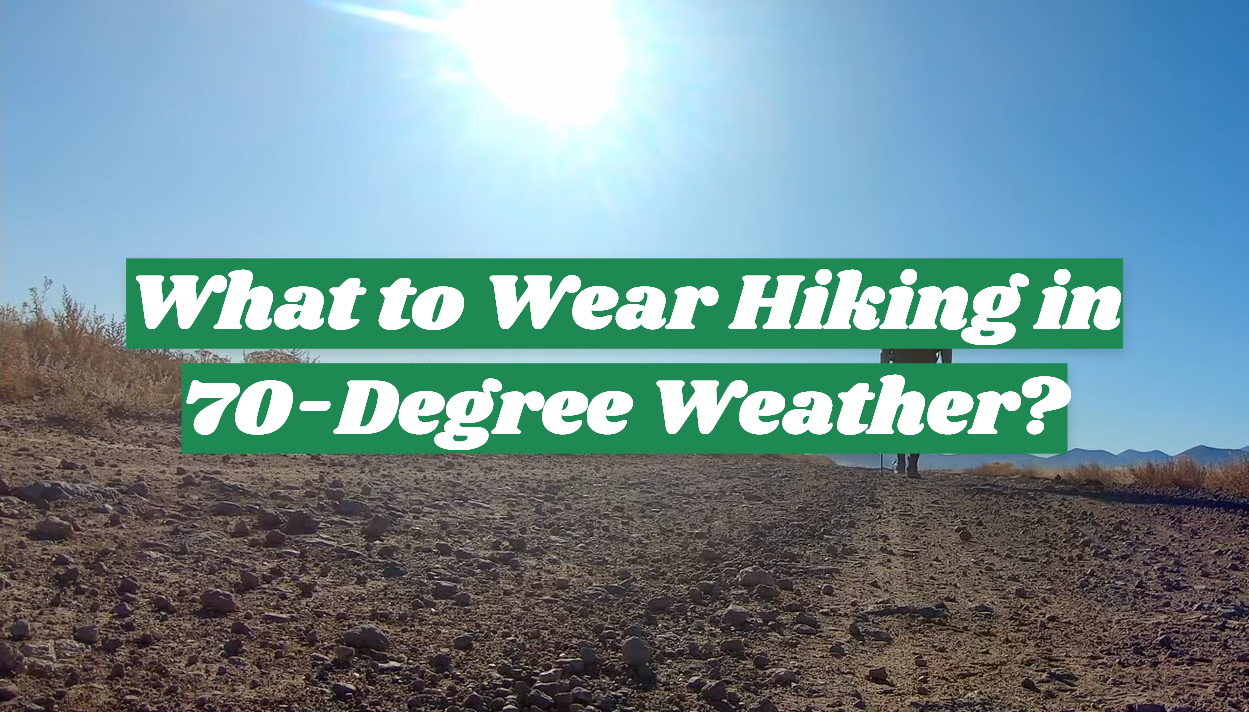
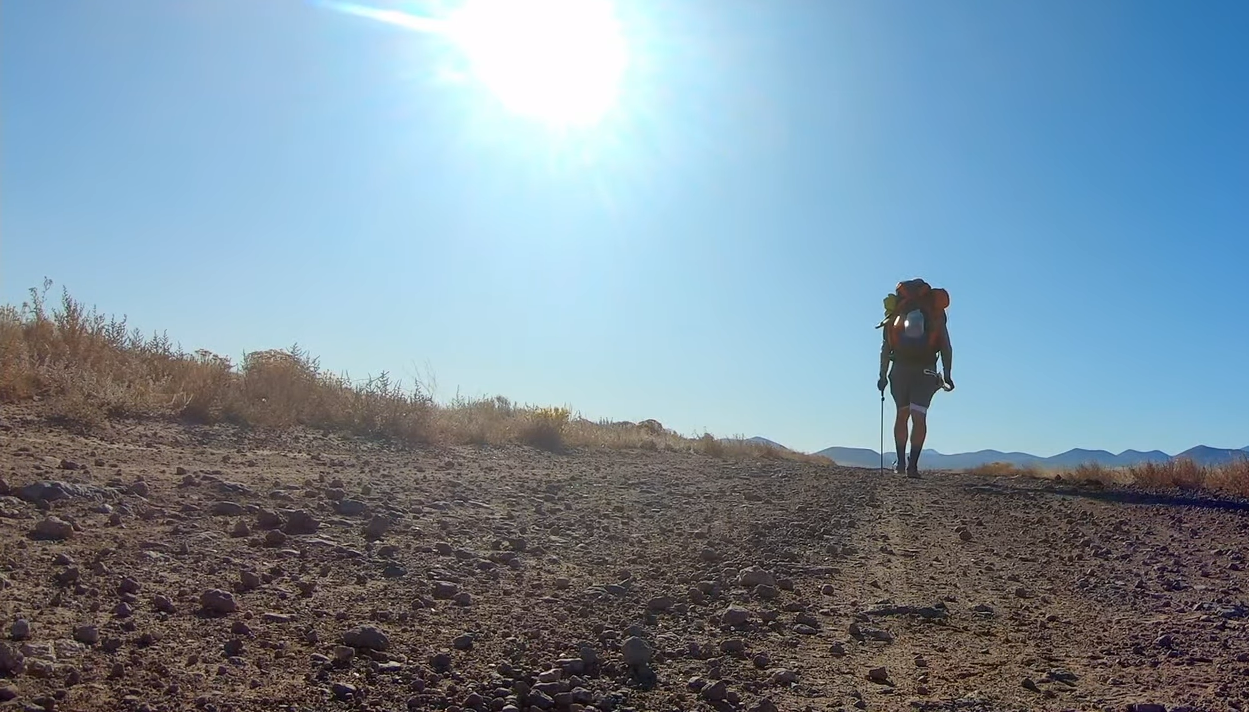



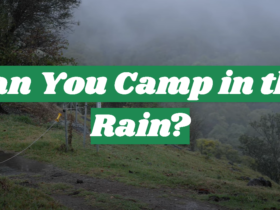
Leave a Review